Eco-Friendly Flooring: From Laminate to Solid Hardwood, Enhancing Indoor Air Quality
Sustainability is a crucial thing in today’s world. It is very prime to, while we are, that in developing a more health-giving living space and lowering our environmental impact, one of the prime household decisions turns out to be an eco-friendly flooring choice. In contrast to conventional flooring materials, these often mean cutting down forests, resulting in dangerous volatile organic compounds (VOCs). Eco-friendly floor coverings help achieve a better and healthier environment without sacrificing present-day style and durability. Eco-minded homeowners no longer have to forego style in favor of being responsible; it’s all in the possibilities in everything from bamboo to reused wood.
This article explains precisely why eco-friendly flooring is so important, including its benefits over traditional flooring and how you can choose your flooring to be eco-friendly—right down to every style.
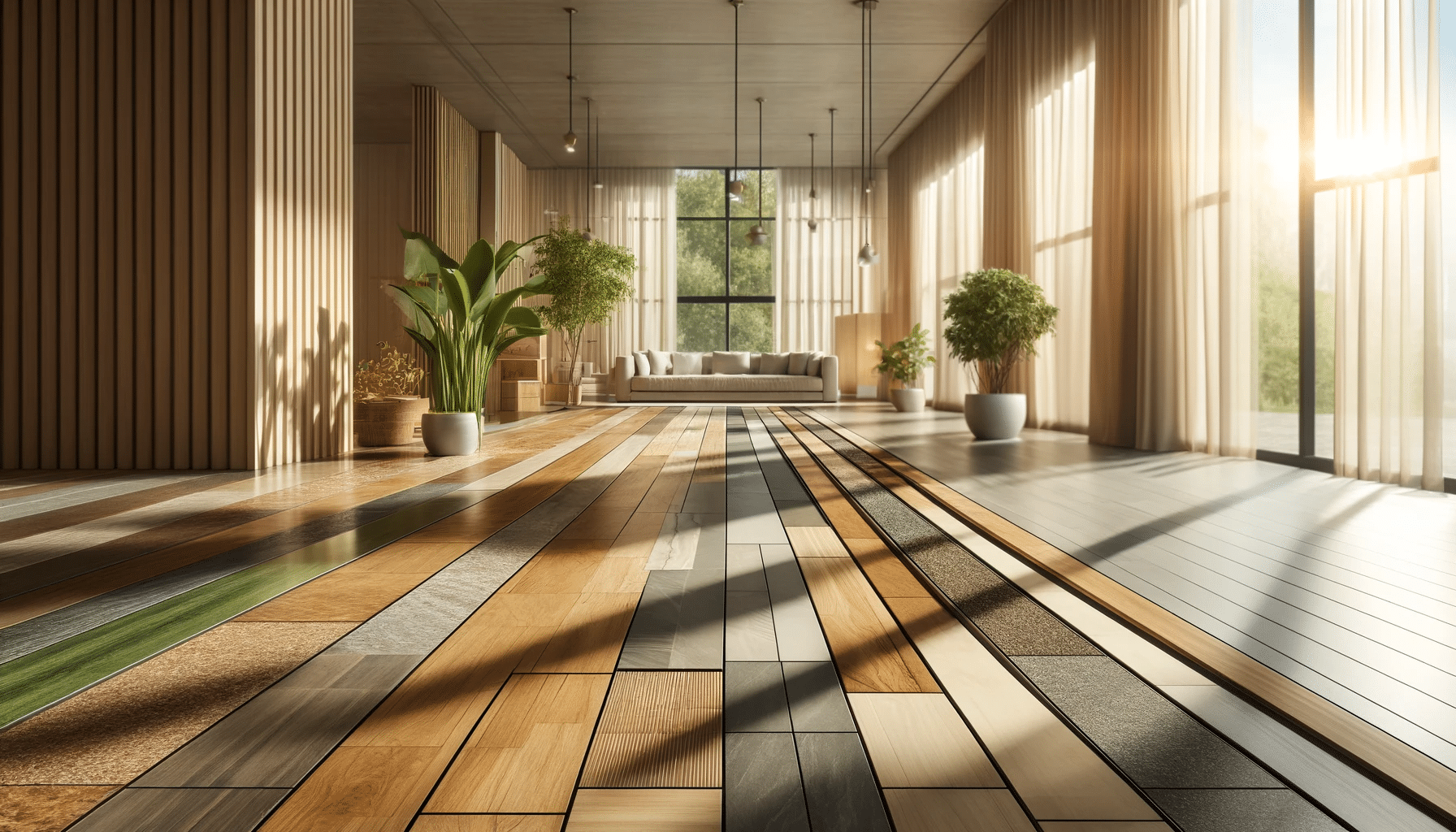
Why Eco-Friendly Floors?
Going green with your floor is more than a fad; it is a significant decision with many benefits. First, these materials reduce environmental impact because they use renewable and recycled resources, reducing our dependence on finite ones.
Moreover, eco-friendly floors enhance high-quality indoor air to ensure that, at home, you experience safe and comfortable indoor conditions through reduced or, much preferably, eliminated VOCs. They are also similarly durable and cost-effective because of advancements in sustainable materials compared to traditional manufactured ones, meaning they have a cheaper value over time and bring more value to your home.

Overview of Eco-Friendly Flooring Materials
Bamboo Flooring
But in reality, bamboo is not only a quickly renewable material but also has strength and sturdiness equal to traditional woods and hardwoods, and often it exceeds in a hardness test. In bamboo flooring, one must observe that strand-woven bamboo floors offer the most complex and most durable floors. In contrast, horizontal and vertical bamboo floors give a more natural, traditional look.
Bamboo is very resistant to moisture and insects, making it ideal for humid or even dry living conditions. The eco-friendliness of using bamboo for flooring ascends when the bamboo is taken from responsible manufacturers that promise to emit a low level of VOC and avoid aggressive harvesting.
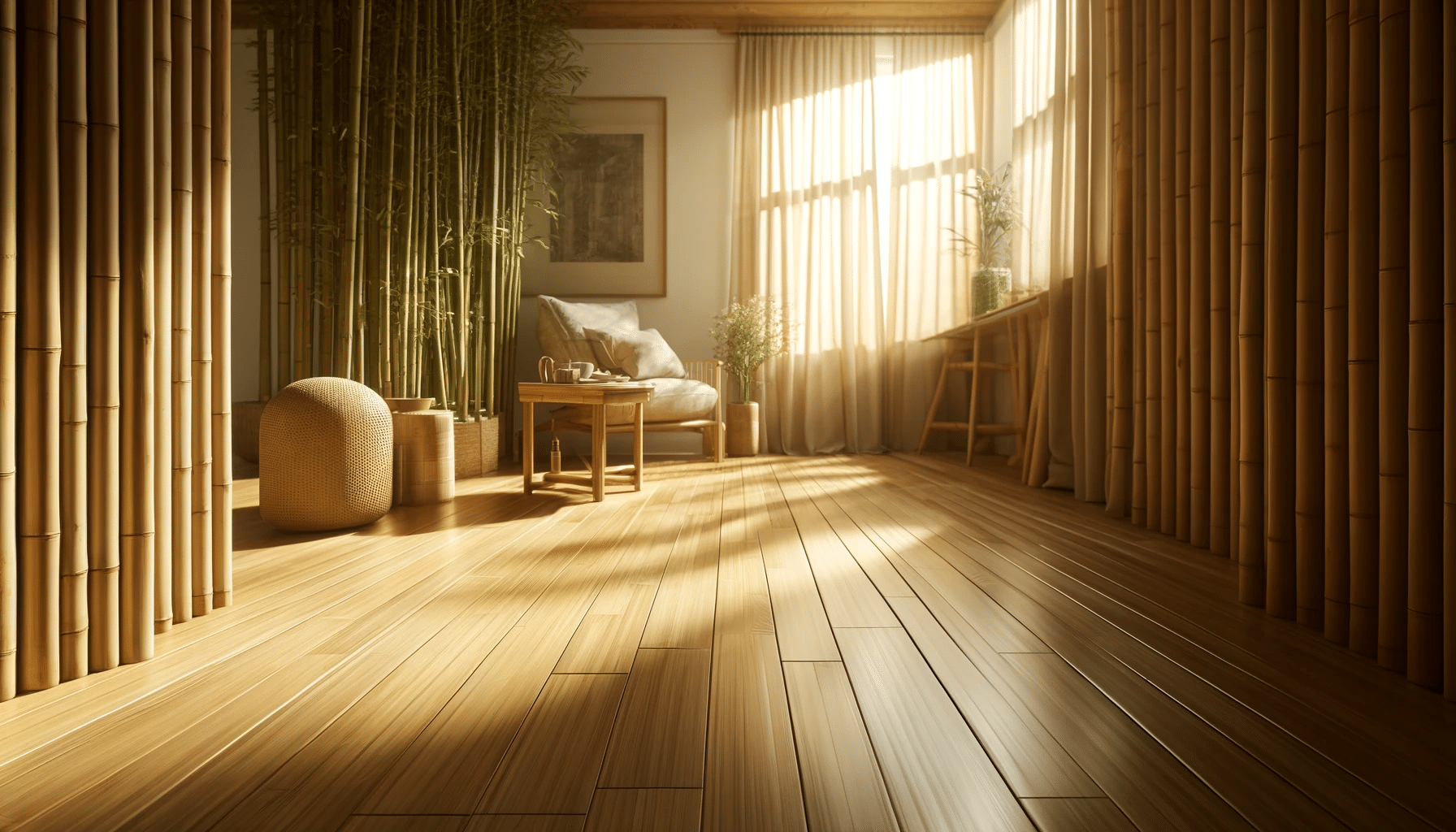
Cork Flooring
Apart from comfort and efficiency, cork flooring is naturally fire-retardant and may even be a natural insect repellent. Cork’s sound reduction makes it a perfect choice for sound-reduction rooms such as bedrooms, offices, and studios. For those who are sustainability-minded, cork top flooring is made that can last up to 40 years when properly cared for, making it a quite long-term investment in your home’s environmental footprint and comfort.

Recycled Wood
Could recycled and certified reclaimed wood flooring be considered the ultimate dream floor? Wood will come from various sources, including old warehouses, barns, other buildings, and railroad ties. This would further ensure that the historical resources are preserved and, in reality, add quite a unique character that new wood would never, of course, be able to replicate; in another expression, it is impossible to find two the same floors. Consider where reclaimed wood comes from and how it has been treated so that you are not sourcing potential contaminators. Reclaimed wood, when properly sourced and treated, has a safety and durability factor; it tells a story that may not otherwise be included in your space.
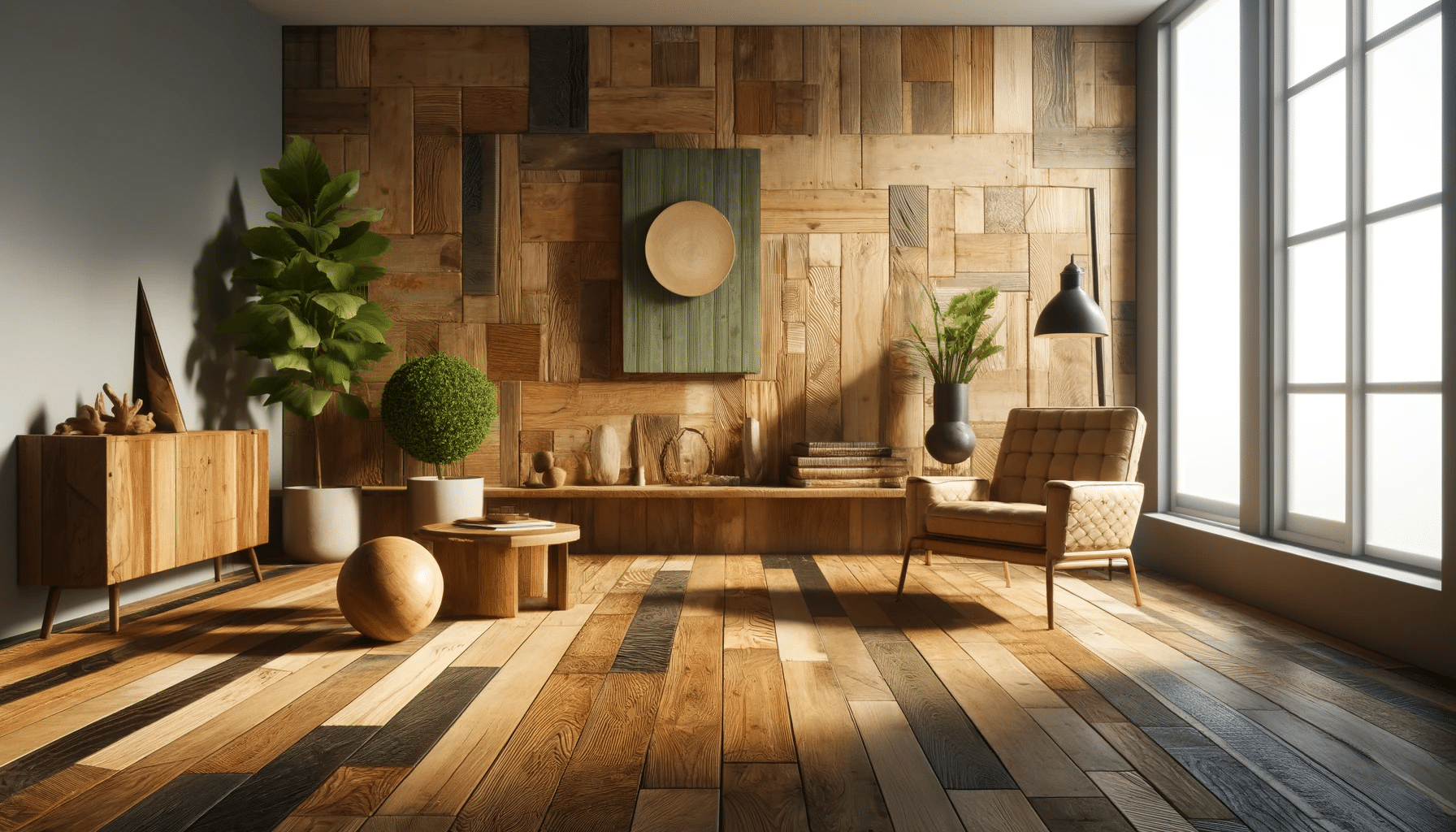
Linoleum
Further, linoleum derived from linseed oil provides many other commendable products with the most negligible environmental impact since it is cultivated without irrigation or pesticides and is at the top of the list of those looking to minimize their ecological footprints. Moreover, linoleum floors may last even 40 years; they are perfectly compostable after their lifetime.
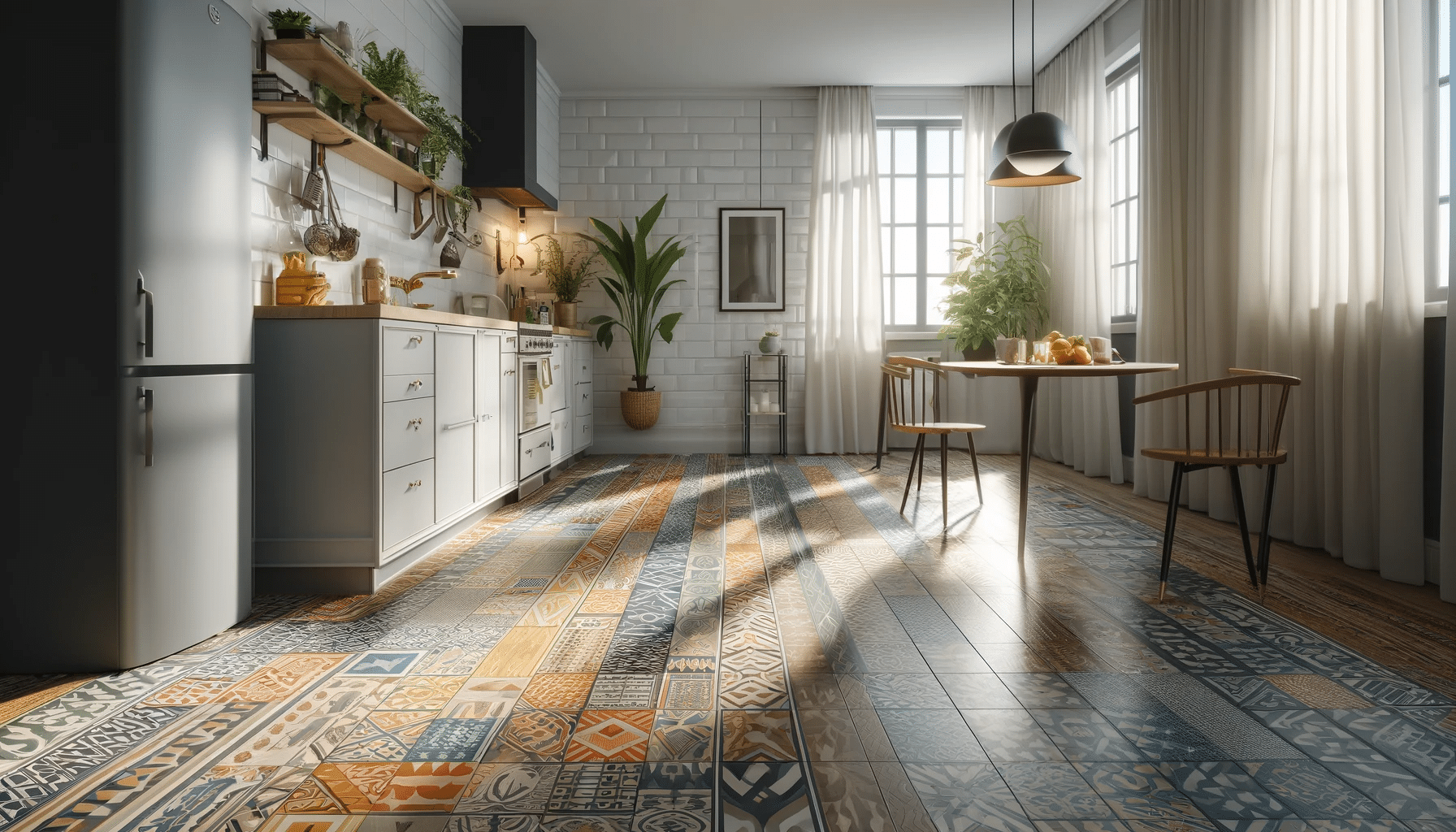
Concrete
The very low maintenance and durability of concrete flooring have made it very versatile in design. Advancements in staining and stamping techniques have been enabled. It can provide thermal mass; that means, in a building, temperatures may be controlled. It has an aspect of absorption of heat by day and releases at night, hence lowering demands for heating and cooling.

Natural Stone
Nothing comes close to matching the timeless appeal of natural stone flooring, be that a range from marble to slate to limestone—ensuring a fit for any design aesthetic. Stone, therefore, is strong and able to withstand pressures. It can be used in entryways, kitchens, and outdoor places. Stones should be cut from a quarry with sustainable consideration; they should also be cut with minimum transport to ensure that the usage of the stone does not add up to high carbon emissions.

Eco-Friendly Vinyl Plank
Nowadays, the modern eco-friendly vinyl plank floor often includes some content from recycling and is designed for easy recyclability at the end of its life, which further adds to the least waste in landfills. Notably, improved manufacturing technology has reduced phthalates and other harmful chemicals used in vinyl manufacture, making such floors even safer for indoor air quality.
Modern technology now brings an ecologically inspired, waterproof option to your market for those areas within your house that take spills and moisture, a performance with eco-consciousness.
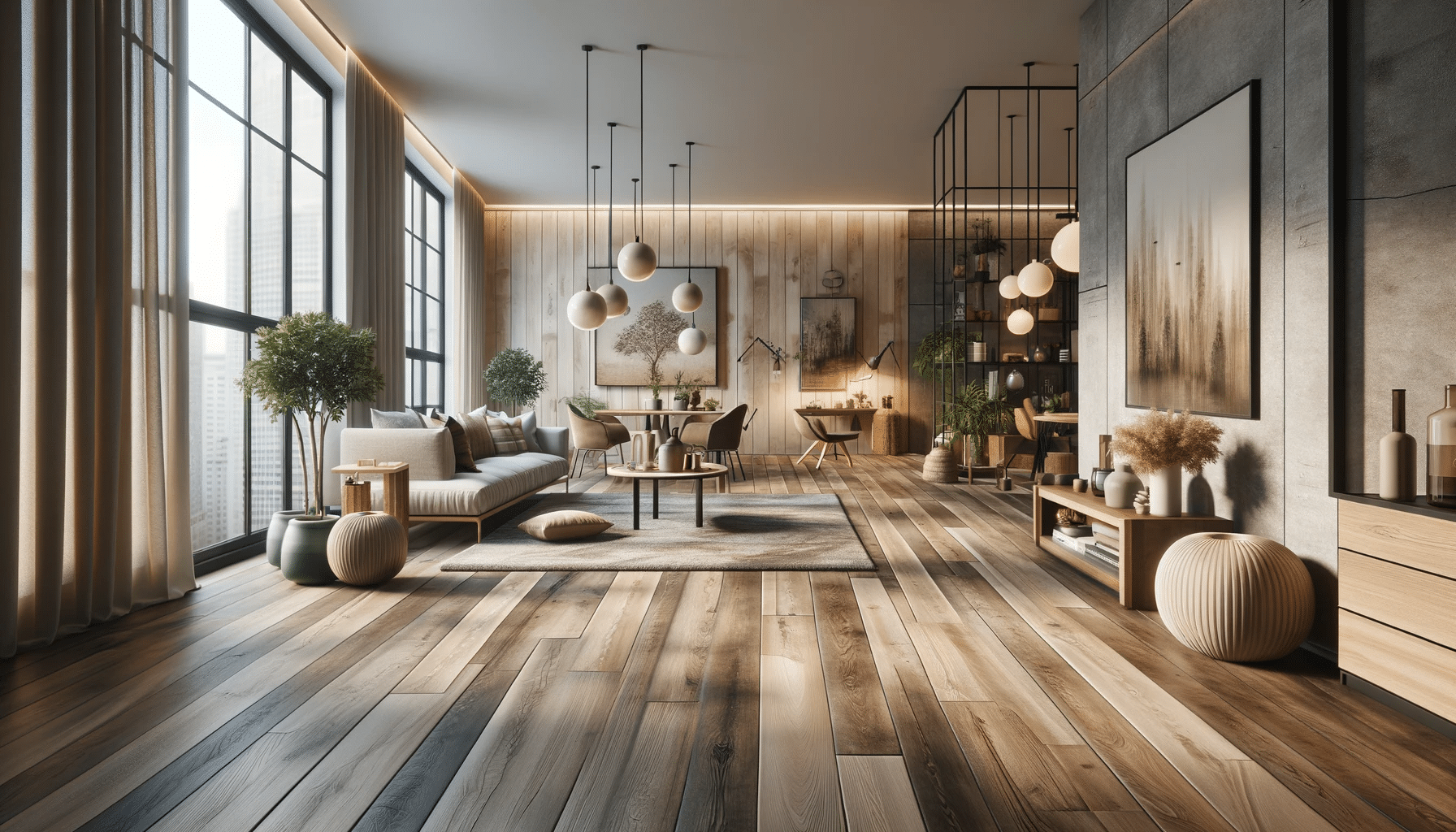
Choosing the Right Eco-Friendly Flooring for Your Style
More importantly, considering your home’s design and general lifestyle, eco-friendly flooring should beech to enable you to achieve a modern look. Specifically, polished concrete or bamboo will give elegance and a contemporary look. With this, recycled wood can help you get the warmth and character that usually accompany rustic interiors.
Consider what the room is to be used for, its expected foot traffic, and what would be required in terms of maintenance to ensure your selection makes the room look great and is fit for the purpose.
- Modern and Minimalist: Polished concrete or bamboo are great floor options for modern or minimalist abodes. Polished concrete floors give a more industrial, sleek feel—perfect for a minimalist look where light bounces back and exudes space. Bamboo—with its clean lines and many finishes—provides warmth in a contemporary way. They are both resilient and practical for high-traffic solutions to wear and tear.
- Rustic or Farmhouse: For rustic or farmhouse-style desires, use recycled wood or cork floors that bear warmth and character to an immeasurable level. With such a texture and history, the rich recycled wood imparts a real and earthy space—perfect for nailing the rustic look. Cork flooring provides a slightly softer underfoot feel and boasts unique natural patterns, which would go very well with a more rustic, cozy interior while providing great insulation.
- Traditional and classic: floorings such as natural stone or linoleum may benefit homes by giving them a conventional or classic appearance. Natural stones provide endless beauty and uniqueness. Whether marble, slate, or limestone, each piece of natural stone offers an elegant look and grand, elegant-looking touch. Linoleum has all the qualities of sustainability and is an environmentally available product in patterns that appear very convincingly like some classic looks of tiles and hardwood. It is customizable to match even very traditional decor styles and offers durability and ease of maintenance.
- Eclectic and Bohemian: One of those ways is the eco-friendly vinyl plank flooring, which doesn’t deliver just a range from being diverse and bohemian. The modern-day vinyl planks come in every color and pattern under the sun, or, in other words, reflect the colorful, inventive, and capricious nature of eclectic décor. Many custom floor designs can be achieved with vinyl planks. In addition, with the medium resistance to high-traffic foot resistance and easy cleaning, this flooring is practical for this type of dynamic space.

Considerations Beyond Style
- Utilization of the room: The role the room will play and the foot traffic it will experience are both important. The same is true for kitchens, bathrooms, and entries, utilizing moisture-repelling, resilient flooring products like eco-vinyl planks or polished concrete. Bedrooms and living spaces will probably want more of the cork’s warmth or the softness of recycled wood.
- Maintenance requirements: Every kind of floor requires maintenance. For instance, bamboo and cork floors only need to be regularly swept and occasionally washed with the right cleaners. The former can even be sealed to repel possible stains, while the latter is supposed to be repolished occasionally to keep looking shiny.
- Sustainability meets health: Consider your floor selections’ ecological and health impacts. Go for such sustainable flooring, which would be environment-friendly and also, concerning health, does not indulge in harmful chemicals that turn your home into an unhealthy or non-eco-friendly place.
This will allow readers to explore the floor options available in equal measures when selecting one that can meet their style, values, and lifestyle needs. This way, the floor looks perfect not just on the day it was installed but over time; it can be said to sustain the household’s needs and preferences.

Installation and Maintenance
These installations and maintenance requirements differ depending on the type of eco-friendly flooring. For example, bamboo and cork floors only require regular sweeping and mopping to keep them. Concrete and stone floorings may be professionally installed and later easily maintained. Following manufacturer recommendations is crucial to ensure your flooring remains beautiful and functional for years.

Cost Considerations
Considering the eco-friendly floor, weighing the purchasing price against long-term savings and benefits is essential. Compared to traditional materials, the purchase price will be higher with some options, like bamboo and cork. However, some savings will accrue over time due to their durable nature and low maintenance requirements. Besides, eco-flooring will increase the property’s value and appeal to any buyer with eco-friendly considerations. Consider each material’s life cycle cost, installation, maintenance, and potential energy saving if it has insulating properties (e.g., cork).

Conclusion
Finally, re-emphasize making eco-conscious decisions in every part of home design and focus on choosing eco-friendly flooring significantly reduces one’s carbon footprint and improves indoor living quality. Summarize some of the key benefits mentioned throughout the article: reduction of environmental impact and contribution to health benefits and sustainability. Convince the readers why they need to reflect on the issue of “how much my own flooring choice helps me and the rest of society reach our generally sustainable life and health priorities.










